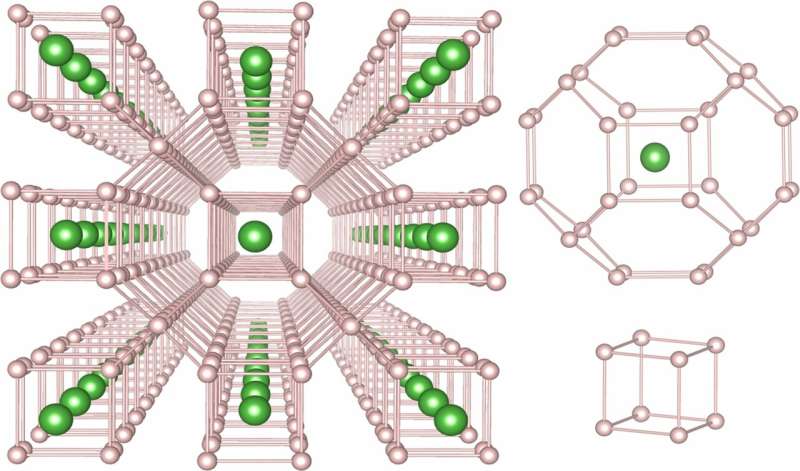Superhydrides approach room temperature superconductivity at high pressure

Theory suggests that metallic hydrogen should be a superconductor at room temperature; however, this material has yet to be produced in the lab. Metal superhydrides are packed with hydrogen atoms in a configuration similar to the structure of metallic hydrogen. Models predict they should behave similarly. Samples of superhydrides of lanthanum have been made and tested, and at the 2019 APS March Meeting in Boston, Russell Hemley will describe his group's work studying the material.
There are 5.5 million miles of power lines in this country—each one is losing energy right now. This ongoing 2 to 4 percent overhead loss could be reduced or eliminated if a lower resistance transmitter could be found. Many zero resistance materials have been demonstrated in the lab since superconductivity was discovered in 1911. Unfortunately, these superconductors require low temperatures. Progress toward commercially viable superconductors that operate at or near ambient temperatures is a dream of physics, materials science and energy technology.
Superhydrides were predicted by scientists at George Washington University to exhibit superconductivity at temperatures approaching room temperature in 2017. Now these scientists have confirmed their prediction in the laboratory in this new class of materials. Their results could be an important step in the pursuit of electric transmission without resistance losses.
This week at the 2019 American Physical Society March Meeting in Boston, Russell Hemley will present the latest research on superconductivity in this class of materials. He will also participate in a press conference describing the work. Information for logging on to watch and ask questions remotely is included at the end of this news release.
Theory predicts uncooled superconductivity in metallic hydrogen—a condensed phase where H nuclei are crushed together in a delocalized band of their own valence electrons. A conduction band lies energetically just above, so metallic hydrogen conducts. As such it behaves as an alkali metal—but also as a very high temperature superconductor. The pressure required to make this still hypothetical material is estimated to be the scope of current experimental techniques. There have been unconfirmed reports of its observation. However, the results have not been reproduced.
A related avenue in the pursuit of normal temperature superconductors focuses on hydrogen-rich materials that might mimic metallic hydrogen. Metal superhydrides (MHx x>6) appeared promising, according to the predictions of the George Washington University group. These materials are packed with hydrogen atoms in a configuration similar to their structure in metallic hydrogen. The George Washington University team synthesized one of these materials last year—lanthanum superhydride—and in recent experiments found the material is in fact a superconductor.
They used a diamond anvil cell to create LaH10 specimens under pressures approaching 2 million atmospheres. The sample's electrical resistance plummeted; superconductivity continued almost to room temperature. These measurements were in good agreement with their theoretical prediction.
Progress toward higher temperature superconductors will continue in this laboratory. Advances in understanding uncooled superconductivity will suggest new directions toward unpressurized approaches.
"The findings should open a new chapter in research on superconductivity," Hemley said. "The work also shows the importance of 'materials by design' in the creation of new materials."
More information: The 2019 APS March Meeting presentation "Near room temperature superconductivity in superhydrides at megabar pressures," by Russell Hemley, will take place Monday, March 4, at 11:15 a.m. in room 156A of the Boston Convention and Exhibition Center. Abstract: meetings.aps.org/Meeting/MAR19/Session/B17.1
Provided by American Physical Society





















